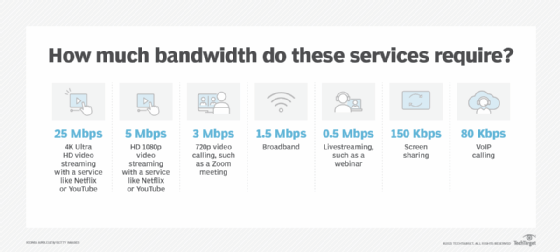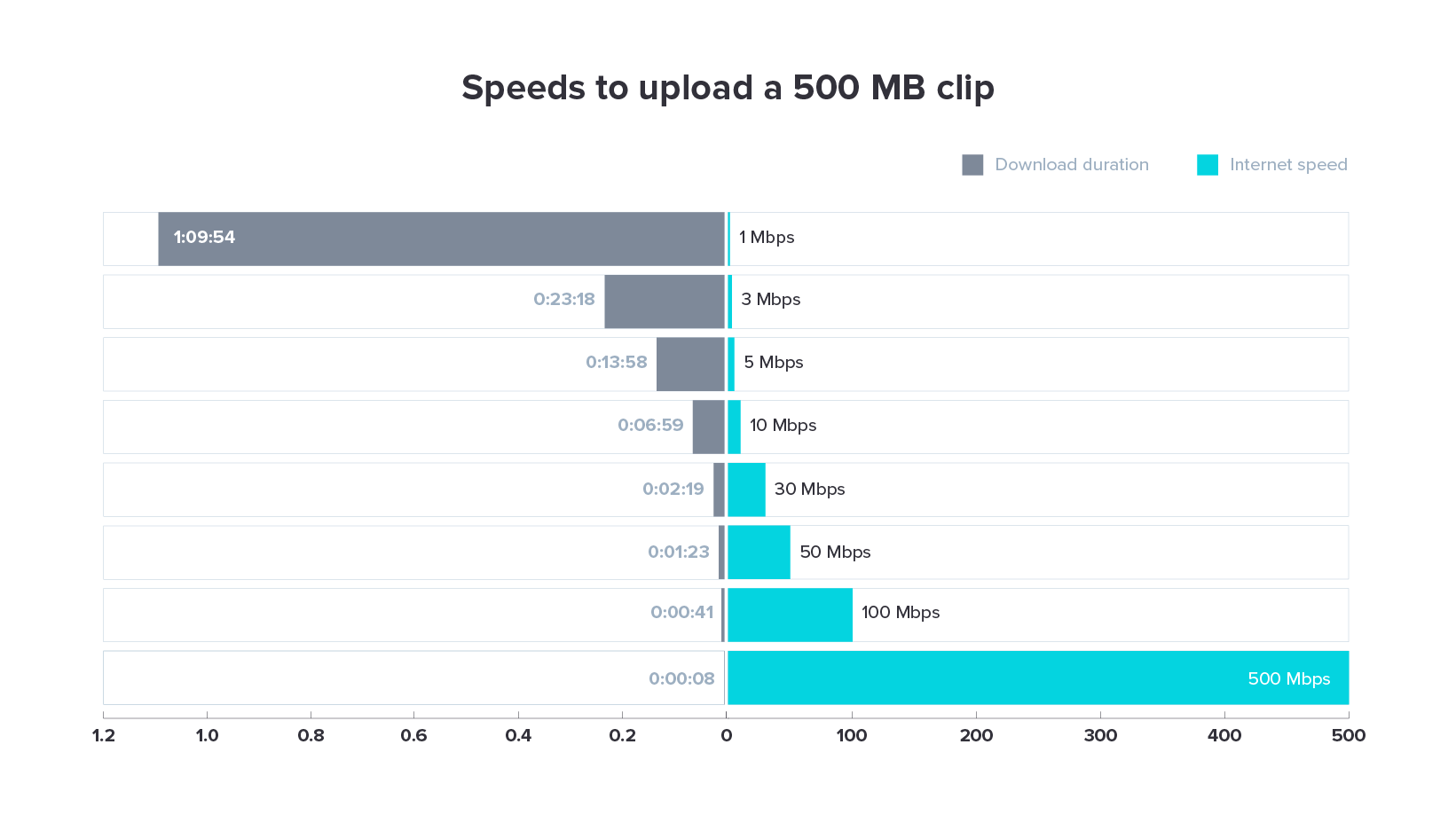The Future of Internet Speeds: Patterns in Megabits Per Second
Wiki Article
How Megabits Per Second Influence Your Online Activities
The concept of megabits per second (Mbps) plays an essential function fit our online experiences. As electronic activities multiply, comprehending the ramifications of Mbps on streaming, video clip, and pc gaming conferencing ends up being significantly important. Higher Mbps can improve performance and minimize disruptions, while poor rates may foster stress and inefficiency. Analyzing your family's certain demands in relationship to these rates is vital, particularly as multiple devices vie for transmission capacity. Yet, the nuances of exactly how Mbps impacts numerous online tasks necessitate more expedition, especially as our reliance on digital connection remains to advance.Comprehending Megabits Per Second
When considering web rate, it's important to comprehend the concept of megabits per second (Mbps), which serves as a conventional dimension for data transfer rates. This statistics measures just how much data can be sent over an internet connection in one second, supplying a clear understanding of performance capabilities - Megabits Per Second. For context, one megabit is equivalent to one million bits, and Mbps is generally utilized to reveal data transfer for numerous on-line tasksA greater Mbps suggests a faster internet link, making it possible for individuals to carry out jobs such as downloading files, surfing sites, and taking part in online video gaming a lot more successfully. For circumstances, common surfing needs around 1-5 Mbps, while streaming high-def video clip may require 5-25 Mbps. Understanding these requirements is vital for identifying the ideal web rate needed for certain tasks.
Furthermore, the number of devices connected to a network can impact overall performance. Multiple customers streaming, gaming, or downloading and install at the same time can stress available transmission capacity, resulting in slower speeds - Megabits Per Second. Reviewing individual online routines and needs is vital in picking a web strategy that straightens with one's needs, making certain a seamless electronic experience
Streaming and Buffering Issues
Streaming high-def material has actually come to be a staple of modern-day on-line amusement, yet it is often come with by annoying buffering issues. These interruptions can dramatically detract from the viewing experience, bring about frustration and possible loss of target market involvement. Buffering takes place when the data transmitted from the streaming service is not obtained quickly enough to preserve a smooth playback, frequently because of insufficient net rate measured in megabits per second (Mbps)
Additionally, real-time streaming can be affected by network blockage, which occurs when multiple devices share the very same transmission capacity. Consequently, enhancing link rate and guaranteeing sufficient Mbps is vital for a seamless streaming experience. As streaming services proceed to progress, comprehending the effect of Mbps on buffering problems remains crucial for consumers looking for uninterrupted home entertainment.
Online Gaming Performance
The impact of internet rate on online tasks prolongs beyond streaming, dramatically affecting on the internet video gaming performance. In affordable gaming, reduced latency and high transmission capacity are critical for a smooth experience. A rapid link lessens lag, enabling players to respond promptly to in-game occasions, which can be the distinction in between victory and loss.Transmission capacity, determined in megabits per second (Mbps), plays a vital function in sustaining multiple gadgets and gaming platforms simultaneously. Inadequate transmission capacity can lead to dropped links or minimized video game top quality, adversely influencing gameplay. For example, online multiplayer video games call for substantial data transfer, especially throughout peak pc gaming hours when numerous players are online.
Furthermore, the kind of game can likewise determine the essential net rate. Fast-paced first-person shooters require higher speeds to maintain responsiveness, while turn-based strategy games may function fairly well on lower speeds. As on the internet video gaming proceeds to progress, with boosting visual integrity and even more complicated multiplayer atmospheres, the need for higher Mbps will only great site increase. As a result, gamers must guarantee they have appropriate web speed to enhance their gaming performance and overall experience. Spending in a robust internet connection is vital for gamers looking to enhance their performance and enjoyment.
Video Clip Conferencing Top Quality
In today's digital landscape, video clip conferencing high quality is heavily affected by web rate, especially in terms of transmission capacity and latency. Top notch video calls call for adequate bandwidth to transfer audio and look these up video clip data effortlessly. Usually, a minimum of 1.5 Mbps upload and download rates is suggested for standard interpretation video, while high-def video conferencing normally requires a minimum of 3 Mbps.Latency, or the hold-up between sending and getting information, additionally plays a vital function in the customer experience. Higher latency can lead to echo, lag, and disjointed interactions, which can impede cooperation and engagement during meetings.
Additionally, numerous participants in a video conference can strain offered transmission capacity, demanding even higher speeds. Network congestion, typically triggered by synchronised tasks like streaming or downloading, can better deteriorate video clip top quality. Therefore, for organizations counting on video clip conferencing for remote collaboration, understanding the partnership in between megabits per total and second interaction high quality is crucial for maintaining productivity and enhancing virtual communications.
Picking the Right Net Plan
Choosing a proper web plan is important for making sure ideal performance in various online tasks, specifically in setups that require high data transfer, such as video conferencing and online pc gaming. Megabits Per Second. When taking into consideration a net plan, it is necessary to assess both the speed and information allocation to match your particular usage demandsFor families with several users taking part in synchronised activities, a plan supplying higher megabits per second (Mbps) is recommended. Typically, a minimum of 25 Mbps appropriates for typical streaming and browsing, while plans going beyond 100 Mbps are more suitable for more extensive jobs. Furthermore, consider the nature of your online tasks; video conferencing calls for a minimum of 1.5 Mbps upload rate, while on the internet video gaming may need a lower latency yet constant connection.
Endless data plans can protect against throttling and disruptions, specifically if heavy usage is expected. By attentively picking an internet plan customized to your needs, you can enhance your on the you could try this out internet experience, making sure smooth, nonstop access to your preferred tasks.
Conclusion
In conclusion, the value of megabits per second (Mbps) in shaping on-line activities can not be overemphasized. An extensive understanding of individual or family Mbps requirements is crucial for choosing an appropriate net plan that effectively supports diverse online tasks and customer needs.

Normally, a minimum of 25 Mbps is suitable for common streaming and surfing, while plans going beyond 100 Mbps are more effective for even more intensive jobs. In addition, take into consideration the nature of your online tasks; video clip conferencing needs at the very least 1.5 Mbps upload speed, while on the internet video gaming might need a lower latency yet consistent link.
Report this wiki page